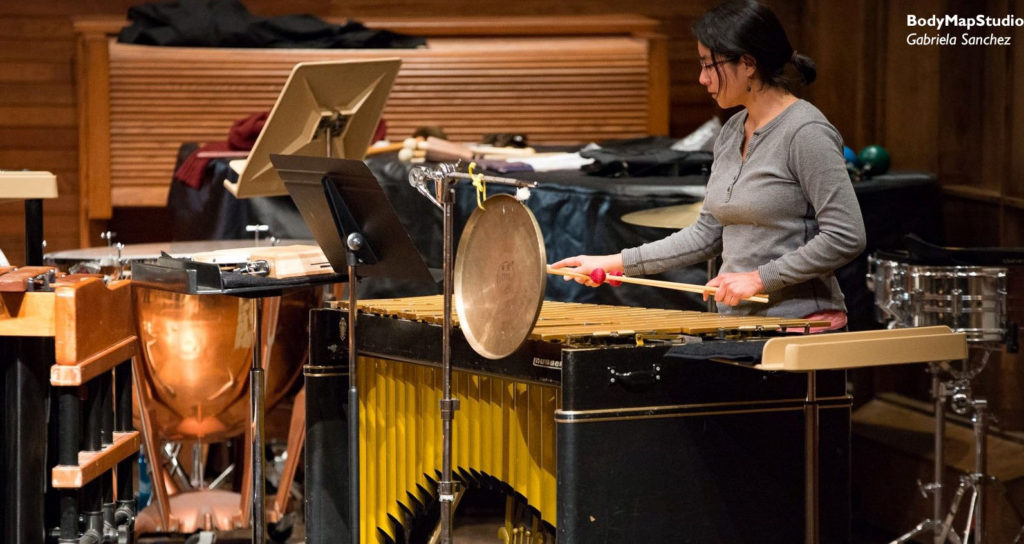
1) Be in balance while standing
If you have pain in your lower back or your legs feel tired after practicing while standing, it’s likely that your body is not balanced. This means that some parts of your body are doing extra work. They try to do the functions that other structures should be doing. For example, we are supported by our bone structure, but if your muscles attempt to do this they will be tense. This tension will be reflected throughout the whole body. The function of the muscles is to move, not to support.
If you want to stop the discomfort in your lower back or legs, you need to understand how the different parts in your body relate to each other. This is not easy to explain only with words. For now, I will give you a clue to begin to distinguish your body.
Be conscious about your legs and pay close attention to your knees. Although marimba playing requires movement in our legs while we reach the high or low notes, think about the following questions in all instruments. Think about your playing in the instruments that seem static, for example a snare drum.
How much do you move your legs when you play?
How are your knees when you practice? Do you push them backwards? Are they bent?
Do you distribute your body’s weight equally in both legs?
Take some minutes of your practice time to distinguish how you use your legs.
The legs are completely related to the lumbar region and if you suffer from back pain, it is likely that you are tensing your legs and your body is not balanced. If you lock your knees, your body needs to compensate and it is impossible to find balance.
2) Be familiar with the instruments that you play
Percussionists have to play different instruments which vary in size, weight, and technique. It’s very different to play a triangle than to play crash cymbals. Even among percussion keyboards, it is not the same to play marimba, xylophone, vibraphone, etc.
We need to know well the instruments that we play to understand how they relate to our body and, by doing this, reduce the risk of injuries. For example, it is important to know how large or small the instruments are for our hands and if there is any tension while holding them.
Another important thing is to consider the weight of the instruments. Although it seems obvious to be aware of the weight of some instruments, like crash cymbals, we rarely pay attention to the weight of a triangle or tambourine.
Start noticing how much effort you need to pick up an instrument and then how much to hold it. Remember that there is always work in the muscles, but we need to know what the appropriate effort is to avoid pain/tension. It’s important to notice how you deliver the weight of an instrument through your body while holding it.
Start exploring your instruments. Include them in your awareness and pay attention to how they relate to your body.
3) Breathe
How many times are you aware of your breathing when practicing?
Have you noticed if you stop breathing for seconds while playing a difficult passage?
Do you hold your breath when you try to play faster?
Awareness in our breathing is one of the aspects that we study in Body Mapping. Of course we’re always breathing! However, percussionists do not talk as much about breathing as singers, wind, and brass players.
Our breathing will affect our amount of tension, stress, and anxiety within our bodies, and therefore our music interpretation.
There are many things to discuss, learn, and experience about breathing, as well as about the balance of our bodies, but meanwhile observe yourself. The key part is to start questioning, answering, and noticing how you use your body while playing.